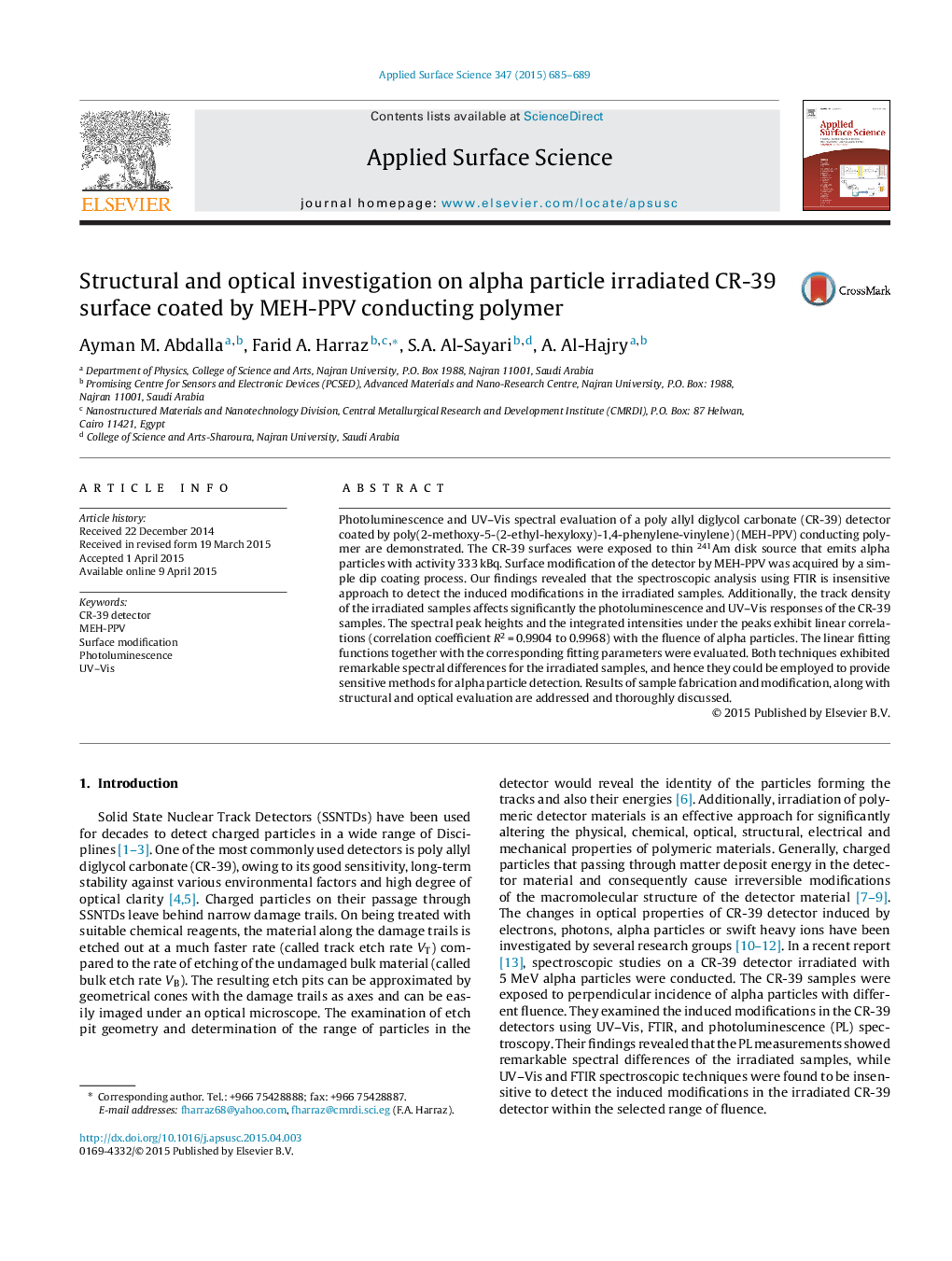| Article ID | Journal | Published Year | Pages | File Type |
|---|---|---|---|---|
| 5358307 | Applied Surface Science | 2015 | 5 Pages |
Abstract
Photoluminescence and UV-Vis spectral evaluation of a poly allyl diglycol carbonate (CR-39) detector coated by poly(2-methoxy-5-(2-ethyl-hexyloxy)-1,4-phenylene-vinylene) (MEH-PPV) conducting polymer are demonstrated. The CR-39 surfaces were exposed to thin 241Am disk source that emits alpha particles with activity 333Â kBq. Surface modification of the detector by MEH-PPV was acquired by a simple dip coating process. Our findings revealed that the spectroscopic analysis using FTIR is insensitive approach to detect the induced modifications in the irradiated samples. Additionally, the track density of the irradiated samples affects significantly the photoluminescence and UV-Vis responses of the CR-39 samples. The spectral peak heights and the integrated intensities under the peaks exhibit linear correlations (correlation coefficient R2Â =Â 0.9904 to 0.9968) with the fluence of alpha particles. The linear fitting functions together with the corresponding fitting parameters were evaluated. Both techniques exhibited remarkable spectral differences for the irradiated samples, and hence they could be employed to provide sensitive methods for alpha particle detection. Results of sample fabrication and modification, along with structural and optical evaluation are addressed and thoroughly discussed.
Related Topics
Physical Sciences and Engineering
Chemistry
Physical and Theoretical Chemistry
Authors
Ayman M. Abdalla, Farid A. Harraz, S.A. Al-Sayari, A. Al-Hajry,
